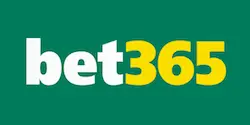Decimal odds are the most popular sports betting odds format in Europe and most other areas around the world. Yet US online sportsbooks have shown little interest in embracing the format.
It may be time for them to reconsider, as decimal (or European) odds possess several key advantages over their American counterpart.
Not only are decimal odds less cumbersome to read than American odds, limiting their appeal to new bettors, but they’re also easier to convert into meaningful probabilities.
In this guide, we’ll explain how to interpret decimal odds, touch on their advantages, and demonstrate how bettors can use them to make faster and more effective betting decisions.
Decimal Odds Betting Sites
 $1500 In Bonus BetsBetMGM Bonus Code: BUSABONUS
Gambling problem? Call 1-800-GAMBLER (available in the US). Call 877-8-HOPENY or text HOPENY (467369) (NY). Call 1-800-327-5050 (MA). 21+ only. Please gamble responsibly. Call 1-800-NEXT-STEP (AZ), 1-800-BETS-OFF (IA), 1-800- 981-0023 (PR). First bet offer for new customers only. Subject to eligibility requirements. Bonus bets are non-withdrawable. In partnership with Kansas Crossing Casino and Hotel. See BetMGM.com for terms. US $1500 promotional offer not available in New York, Nevada, Ontario, or Puerto Rico.
$1500 In Bonus BetsBetMGM Bonus Code: BUSABONUS
Gambling problem? Call 1-800-GAMBLER (available in the US). Call 877-8-HOPENY or text HOPENY (467369) (NY). Call 1-800-327-5050 (MA). 21+ only. Please gamble responsibly. Call 1-800-NEXT-STEP (AZ), 1-800-BETS-OFF (IA), 1-800- 981-0023 (PR). First bet offer for new customers only. Subject to eligibility requirements. Bonus bets are non-withdrawable. In partnership with Kansas Crossing Casino and Hotel. See BetMGM.com for terms. US $1500 promotional offer not available in New York, Nevada, Ontario, or Puerto Rico.
 Bet $5 Get $150FanDuel Promo Code: Not Needed
Gambling problem? Call 1-800-GAMBLER. Hope is here. GamblingHelpLineMA.org or call (800) 327-5050 for 24/7 support (MA). Visit www.mdgamblinghelporg (MD). Call 1-877-8HOPE-NY or text HOPENY (467369) (NY). 21+ (18+ D.C) and present in select states (for KS, in affiliation with Kansas Star Casino). First online real money wager only. $5 first deposit required. Bonus issued as nonwithdrawable bonus bets which expire 7 days after receipt. After 3 month free trial, the full price of League Pass will be automatically charged monthly; cancel anytime. No refunds. Terms, restrictions, and embargoes apply. Limit 1 pass per customer. See terms at sportsbook.fanduel.com. Call 1-888-7777 or visit ccpg.org/chat (CT) or visit FanDuel.com/RG.
Bet $5 Get $150FanDuel Promo Code: Not Needed
Gambling problem? Call 1-800-GAMBLER. Hope is here. GamblingHelpLineMA.org or call (800) 327-5050 for 24/7 support (MA). Visit www.mdgamblinghelporg (MD). Call 1-877-8HOPE-NY or text HOPENY (467369) (NY). 21+ (18+ D.C) and present in select states (for KS, in affiliation with Kansas Star Casino). First online real money wager only. $5 first deposit required. Bonus issued as nonwithdrawable bonus bets which expire 7 days after receipt. After 3 month free trial, the full price of League Pass will be automatically charged monthly; cancel anytime. No refunds. Terms, restrictions, and embargoes apply. Limit 1 pass per customer. See terms at sportsbook.fanduel.com. Call 1-888-7777 or visit ccpg.org/chat (CT) or visit FanDuel.com/RG.
 $1000 Bonus BetCaesars Sportsbook Promo Code: BUSA1000
Must be 21 or older and physically present in AZ, CO, IL, IN, IA, KS, KY, LA, ME, MD, MA, MI, NJ, NY, NC, OH, PA, TN, VA, WV, or WY. New users only. Must register using eligible promo code. First bet after registration must qualify. Max. Bonus Bet: $1,000. Bonus Bet expires 14 days after receipt. Void where prohibited. See Caesars.com/promos for full terms. Know When To Stop Before You Start®. Gambling Problem? CO, IL, KY, MD, MI, NJ, OH, TN, VA, WV, WY, KS (Affiliated with Kansas Crossing Casino), LA (Licensed through Horseshoe Bossier City and Harrah’s New Orleans), ME (Licensed through the Mi’kmaq Nation, Penobscot Nation, and Houlton Band of Maliseet Indians, federally recognized tribes located in the State of Maine), NC (Licensed through Tribal Casino Gaming Enterprise), PA (Affiliated with Harrah’s Philadelphia): If you or someone you know has a gambling problem, crisis counseling and referral services can be accessed by calling 1-800-GAMBLER (1-800-426-2537) or MD: visit mdgamblinghelp.org or WV: visit 1800gambler.net; AZ: Call 1-800-NEXT-STEP; IN: Call 1-800-9-WITH-IT; IA: Call 1-800-BETSOFF. ©2024, Caesars Entertainment
Gambling Problem? Call 1-800-GAMBLER
MA: CALL 1-800-327-5050 or visit gamblinghelplinema.org
NY: Call 877-8-HOPENY or text HOPENY (467369)
$1000 Bonus BetCaesars Sportsbook Promo Code: BUSA1000
Must be 21 or older and physically present in AZ, CO, IL, IN, IA, KS, KY, LA, ME, MD, MA, MI, NJ, NY, NC, OH, PA, TN, VA, WV, or WY. New users only. Must register using eligible promo code. First bet after registration must qualify. Max. Bonus Bet: $1,000. Bonus Bet expires 14 days after receipt. Void where prohibited. See Caesars.com/promos for full terms. Know When To Stop Before You Start®. Gambling Problem? CO, IL, KY, MD, MI, NJ, OH, TN, VA, WV, WY, KS (Affiliated with Kansas Crossing Casino), LA (Licensed through Horseshoe Bossier City and Harrah’s New Orleans), ME (Licensed through the Mi’kmaq Nation, Penobscot Nation, and Houlton Band of Maliseet Indians, federally recognized tribes located in the State of Maine), NC (Licensed through Tribal Casino Gaming Enterprise), PA (Affiliated with Harrah’s Philadelphia): If you or someone you know has a gambling problem, crisis counseling and referral services can be accessed by calling 1-800-GAMBLER (1-800-426-2537) or MD: visit mdgamblinghelp.org or WV: visit 1800gambler.net; AZ: Call 1-800-NEXT-STEP; IN: Call 1-800-9-WITH-IT; IA: Call 1-800-BETSOFF. ©2024, Caesars Entertainment
Gambling Problem? Call 1-800-GAMBLER
MA: CALL 1-800-327-5050 or visit gamblinghelplinema.org
NY: Call 877-8-HOPENY or text HOPENY (467369)
 Up to $1000 in Bonus BetsFanatics Sportsbook Promo Code: Not Needed
Must be 21+. GAMBLING PROBLEM? Call 1-800-GAMBLER
(CO/DC/IL/KS/KY/LA/MD/OH/MI/NC/NJ/PA/TN/VA/VT/WV/WY), (800)-327-5050 or //gamblinghelplinema.org (MA), Call (877-8-HOPENY) or text HOPENY (467369) (NY), 1-800-NEXT-STEP or text NEXTSTEP to 53342 (AZ), (888) 789-7777 or //ccpg.org (CT), or 1-800-BETS-OFF (IA), or 1-800-9-WITH-IT (IN), or www.mdgamblinghelp.org (MD), or morethanagame.nc.gov (NC), or 1800gambler.net (WV)
Up to $1000 in Bonus BetsFanatics Sportsbook Promo Code: Not Needed
Must be 21+. GAMBLING PROBLEM? Call 1-800-GAMBLER
(CO/DC/IL/KS/KY/LA/MD/OH/MI/NC/NJ/PA/TN/VA/VT/WV/WY), (800)-327-5050 or //gamblinghelplinema.org (MA), Call (877-8-HOPENY) or text HOPENY (467369) (NY), 1-800-NEXT-STEP or text NEXTSTEP to 53342 (AZ), (888) 789-7777 or //ccpg.org (CT), or 1-800-BETS-OFF (IA), or 1-800-9-WITH-IT (IN), or www.mdgamblinghelp.org (MD), or morethanagame.nc.gov (NC), or 1800gambler.net (WV)
 Bet $5 Get $150Bet365 Bonus Code: BETUSAGambling problem? Call or Text 1-800-BETS-OFF (IA), 1-800-GAMBLER (AZ/CO/IA/IN/LA/NC/NJ/OH/PA/VA) 21+, (KY) 18+. New Customer Offer Bet $5 and Get $150 in Bonus Bets at bet365. Deposit required. Bonus Bets winnings are added to Bonus Bets balance. Bonus Bet wager excluded from returns. T&Cs, time limits and exclusions apply.
Bet $5 Get $150Bet365 Bonus Code: BETUSAGambling problem? Call or Text 1-800-BETS-OFF (IA), 1-800-GAMBLER (AZ/CO/IA/IN/LA/NC/NJ/OH/PA/VA) 21+, (KY) 18+. New Customer Offer Bet $5 and Get $150 in Bonus Bets at bet365. Deposit required. Bonus Bets winnings are added to Bonus Bets balance. Bonus Bet wager excluded from returns. T&Cs, time limits and exclusions apply.21+ to Play, T&Cs Apply. Gambling Problem? Call 1-800-GAMBLER
How to Read Decimal Odds
Compared to American odds, decimal odds are extremely easy to decipher.
As the name implies, decimal betting odds are displayed as a whole number, followed by a decimal point, and then one or two digits (2.0, 1.91, 4.25).
The number represents the payout for each dollar wagered. For instance, decimal odds of 2.5 means that for each $1 wagered, a winning bet will return $2.50. Likewise, decimal odds of 1.25 will return $1.25 on the dollar.
If the decimal odds are greater than 2.0, then the bet is an underdog to win, with implied odds of <50%. If they’re less than 2.0, then the bet is favored. Vigorish free decimal odds of exactly 2.0 represent an even-money bet, as each winning wager will pay back double the stake.
As an example, if an NBA moneyline has decimal odds of 2.5 on the Milwaukee Bucks and 1.6 on the New York Knicks, the Knicks are a moderate favorite, with a 62.5% implied probability of victory.
The most common decimal odds spread is 1.91/1.91, which is the equivalent of -110/-110 American odds. This number usually represents a point spread, where both sides have an equal chance of winning. The reason the number is lower than 2.0 has to do with the house edge.
Calculating Decimal Betting Odds Payouts
One of the main appeals of decimal odds is the ease with which they’re interpreted. This especially rings true when using decimal odds to calculate payouts.
Only one simple, universal formula is required:
Stake * Decimal Odds = Payout
That’s it. Let’s say you have $8.58 in your online sports betting account and want to risk it all on a 4-leg parlay at 10.83 decimal odds. Using decimal odds, the payout for this highly unconventional bet can still be calculated in seconds:
$8.58 * 10.83 = $92.92
Conversely, American odds payouts are calculated differently depending on the sign. The formulas are also more complicated, mainly because American odds are based around the less intuitive $100 unit. Decimal odds use $1 as their betting unit.
Even learning to read American odds can take a bit of training:
- Negative (-) American odds are read as “wager $X to win $100”. For instance, -200 reads as “wager $200 to win $100”.
- Positive American odds are read as “wager $100 to win $X”. As an example, +400 reads as “wager $100 to win $400.”
Going back to the previous example, 10.83 decimal odds is equivalent to +983 American odds. The payout for an $8.58 wager is determined using the following formula:
Stake * (Positive American odds/100) + Stake = Payout
Compared to the decimal odds calculation, the added layer of complexity is immediately apparent. Even worse, is that if the American odds were instead negative, the formula changes:
Stake * (100/Absolute Value of Negative American Odds) + Stake = Payout
Note: Notice that American odds bettors have to add in their initial stake to calculate their payout. Imagine a bettor wagers $100 at +300 American odds. The payout on a winning wager is not $300, it’s $100 + $300 = $400. The same wager is displayed as 4.0 decimal odds, which simply makes more sense.
The decimal odds formula never changes, regardless of the odds.
How to Display Decimal Odds at US Sportsbooks
Although US online sportsbooks universally display American odds by default, most let bettors toggle the format to decimal or even fractional odds.
However, over the years, sportsbooks have made it more difficult to change the odds display. Now, it typically involves navigating to your personalized sports betting history or settings and changing it from within a submenu:
The process on BetRivers Sportsbook is as follows:
- Navigate to “My Account”
- Go to “Sports Betting History”
- Go to “Settings”
- From the “Odds Format” panel, change the odds display
Not exactly a no-brainer. DraftKings Sportsbook implements a similar, but not equivalent, process:
- Navigate to your profile and select “Account Information”
- Go to “Settings”
- Select “Odd Type Preference” and select your preference from the drop-down menu
Previously, most books allowed bettors to change displays right from the app’s homepage. Why did they suddenly decide to hide the option behind several submenus?
Some speculate that it’s simply because bettors have become accustomed to American odds, while others reason that Americans like betting in $100 units.
The first point is fair but with the increased emphasis on microbetting and same game parlays, online bettors are encouraged more than ever before to make frequent, but smaller lottery-style wagers.
A more nefarious theory is that sportsbooks prefer American odds because they’re more difficult to read, leading beginners to make less informed wagers.
In their defense, all US online sportsbooks display potential payouts from the bet slip.
However, at land-based sportsbooks, uninformed bettors really have no way of knowing how much an unconventional wager will return, at least not without a payout calculator handy.
Converting American Odds to Decimal Odds
Although there are plenty of online tools that will automatically convert American odds to decimal, it’s beneficial to learn how to do basic sports betting calculations by hand:
- Positive odds (+): Divide the American odds by 100 and add 1. For example, +180 converts to (180/100) + 1 = 2.8
- Negative odds (-): Divide 100 by the absolute value of the American odds and add 1. For example, -300 converts to (100/300) + 1 = 1.33
For quick reference, here is a look at some common American odds and their decimal equivalent:
| American | Decimal | Implied Probability |
|---|---|---|
| -1000 | 1.1 | 90.90% |
| -500 | 1.2 | 83.30% |
| -400 | 1.25 | 80% |
| -300 | 1.33 | 75% |
| -200 | 1.5 | 66.70% |
| -150 | 1.67 | 60% |
| -120 | 1.83 | 54.50% |
| -110 | 1.91 | 52.40% |
| +100 | 2 | 50% |
| +120 | 2.2 | 45.50% |
| +150 | 2.5 | 40% |
| +200 | 3 | 33.30% |
| +300 | 4 | 25% |
| +400 | 5 | 20% |
| +500 | 6 | 16.70% |
| +1000 | 11 | 9.10% |
Converting Decimal Odds to Implied Probabilities
One of the key components of becoming a successful bettor is learning how to quickly calculate implied probabilities.
Decimal odds make this a cinch, utilizing just one simple conversion formula:
1/Decimal Odds * 100 = Implied Probability %
For example, if the Philadelphia Eagles moneyline is 1.85, then the implied probability of them winning is 1/1.85 * 100 = 54.05%
Knowing this formula is also useful for calculating the house edge. Assume that the Eagles’ opponent is the New York Giants, and the Giants’ moneyline odds are 2.05. The implied probability of a Giants win is therefore 48.78%.
Add the two sums together and the total is 102.83%. This total minus 100% gives us what’s called the overround, and is used to calculate the house edge or vigorish.
House edge = Overround/(Sum of implied probabilities)
The house edge is 2.83/102.83 = 2.75%. That’s fairly low as far as moneylines go.
The process of calculating the overround and the house edge is always the same, but it’s much easier to calculate implied probabilities using decimal odds. Not only is the American odds formula more complicated, but bettors have to use separate formulas for positive and negative odds.
Decimal Odds Betting FAQ
Robert Dellafave is an expert sports bettor, professional gambler, and advocate for the fair treatment of sports bettors.

